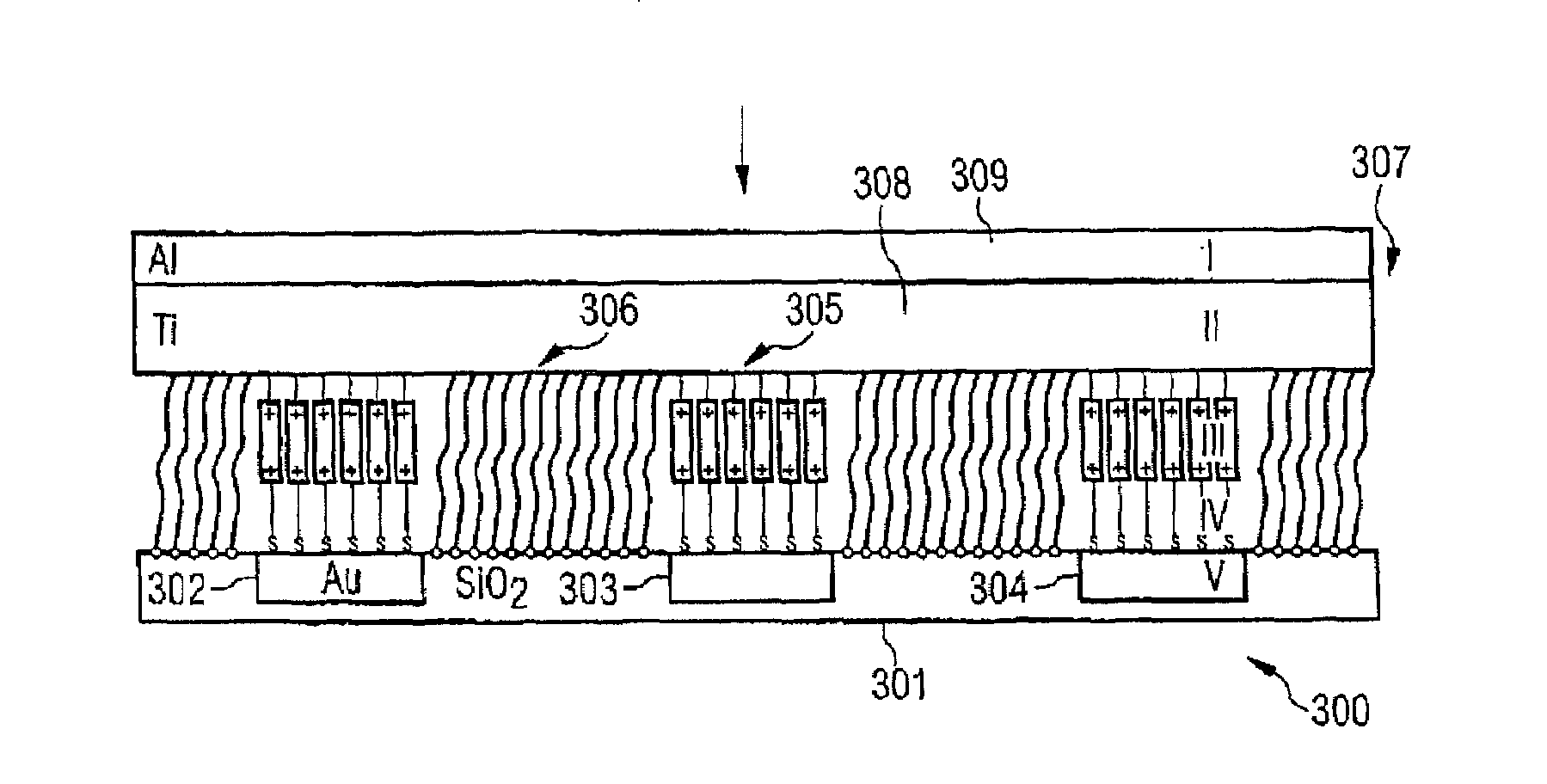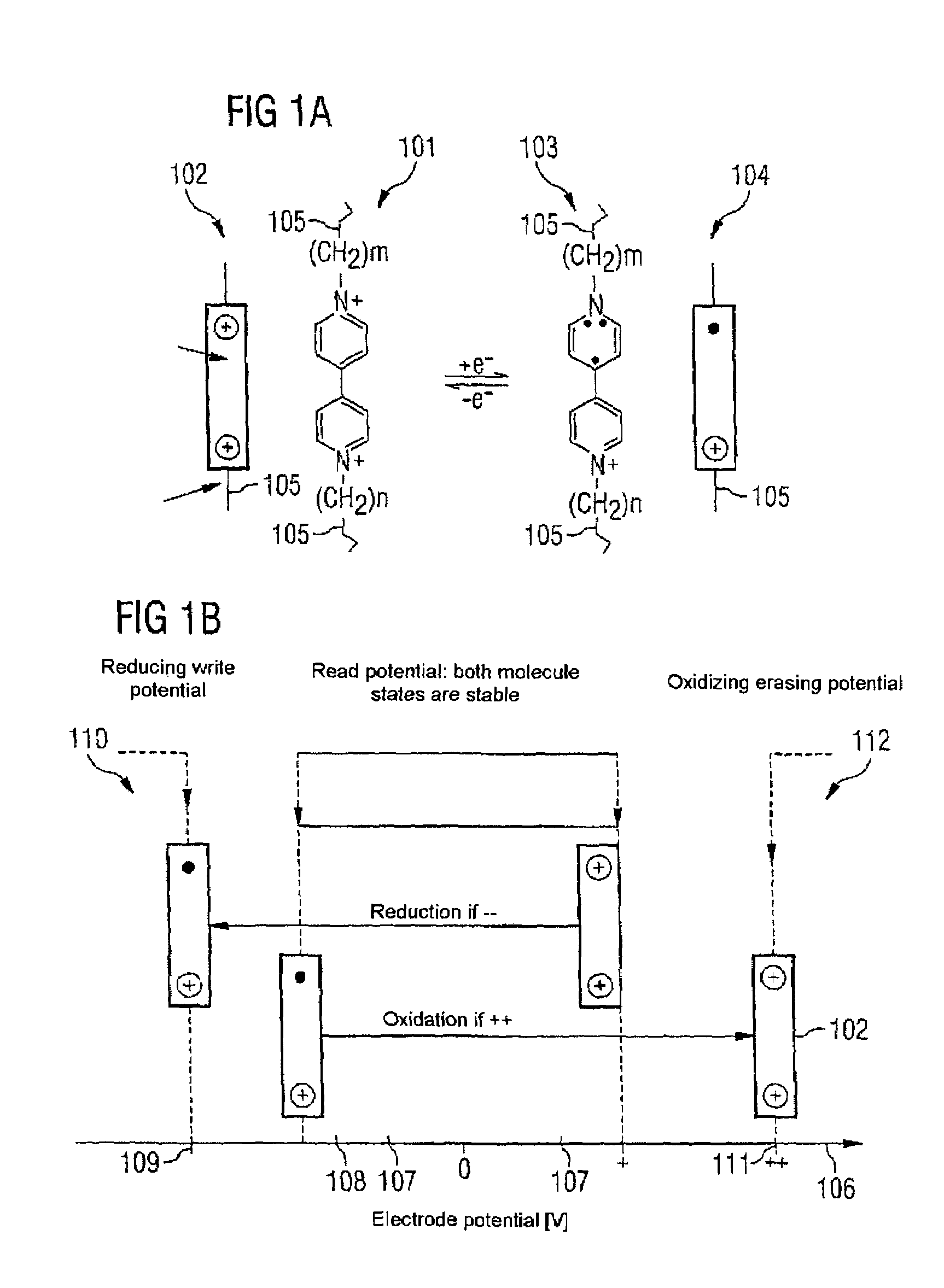Circuit element having a first layer composed of an electrically insulating substrate material, a method for producing a circuit element, bispyridinium compounds and their use in circuit elements
a technology of bispyridinium compounds and circuit elements, which is applied in the field of circuit elements having a first layer composed of an electrically insulating substrate material, bispyridinium compounds and their use in circuit elements, can solve the problems of low signal, two circuit elements which are known from [1] and [2] have further disadvantages for widescale practical use, and the suitability of langmuir-blodgett methods for the coating of components such as silicon wafers, normally
- Summary
- Abstract
- Description
- Claims
- Application Information
AI Technical Summary
Benefits of technology
Problems solved by technology
Method used
Image
Examples
Embodiment Construction
[0100]FIG. 1a shows a representation of a formula as well as a schematic illustration of the bispyridinium unit, on the basis of which the redox process, which takes place at the molecular level, of the bispyridinium unit (of the bispyridinium basic skeleton) is illustrated.
[0101]The double-positively charged cation 101, which has the reference number 102 in the schematic illustration, is the species which is not conductive below a predetermined reduction potential.
[0102]Above this predetermined reduction potential, the cation 101 represents an electron acceptor. After accepting an electron, the doubly-positively charged cation changes to the singly-positively charged radical cation 103 (104 in the schematic illustration). The free electron makes the radical cation electrically conductive. This state is below the oxidation potential of the radical cation 103. Above the oxidation potential, the radical cation in consequence represents an electron donator. The alkyl chains which are i...
PUM
| Property | Measurement | Unit |
|---|---|---|
| total length | aaaaa | aaaaa |
| electrically insulating | aaaaa | aaaaa |
| electrically conductive | aaaaa | aaaaa |
Abstract
Description
Claims
Application Information
 Login to View More
Login to View More - R&D
- Intellectual Property
- Life Sciences
- Materials
- Tech Scout
- Unparalleled Data Quality
- Higher Quality Content
- 60% Fewer Hallucinations
Browse by: Latest US Patents, China's latest patents, Technical Efficacy Thesaurus, Application Domain, Technology Topic, Popular Technical Reports.
© 2025 PatSnap. All rights reserved.Legal|Privacy policy|Modern Slavery Act Transparency Statement|Sitemap|About US| Contact US: help@patsnap.com



